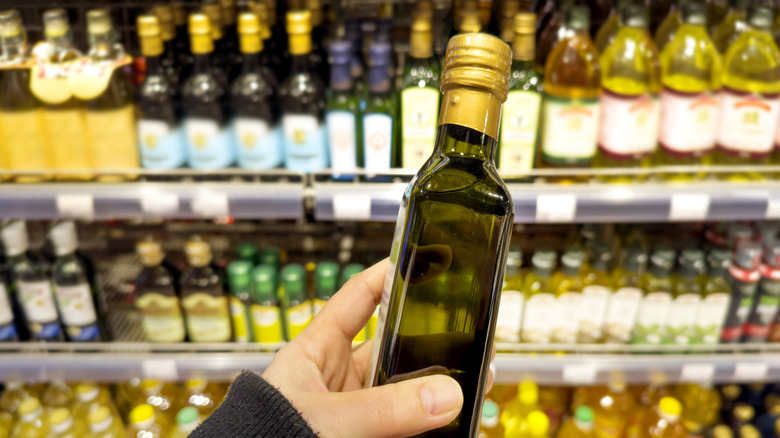Why Seeing Multiple Countries On An Olive Oil Label Is A Red Flag
Olive oil plays such an important role in cooking that it's essential to choose the best bottle every time — and there are so many factors to consider! First, you'll need to decide whether you want regular or extra-virgin olive oil. Then take a deeper dive into the label to differentiate the real top-shelf stuff. Each bottle should list its country of origin. Just one country is a good sign, but multiple countries could be a red flag.
Why? Some companies make blended oils using olives from different regions or countries. This allows them to produce consistent flavors even when crops vary from year to year, and it helps them bottle oil on a large scale. However, olive crops around the world ripen at different times. A blended oil may contain Spanish or Italian olives picked in October along with Greek olives picked in February — and the older ones won't be nearly as fresh. Every day they spend traveling to the production facility means they're losing flavor, which could result in bland or unpleasant tastes when they're added to the mix. This is what you're risking when you see more than one country listed on the label.
The tip for finding fresher flavors
On the other hand, if you see a bottle of single-origin olive oil with just one country on the label, you know the olives all originate from the same growing region. That means they were all harvested at around the same time, since olives in the same area ripen simultaneously. Some bottles even show dates for harvesting and processing. If you're lucky, these dates are very close together. The very best olive oils are picked and pressed within 24 hours, preserving every ounce of their delicate flavor. They'll also share the same terroir, the unique combination of soil and climate that contribute to their particular character.
There's one more piece of information to note on the label: The "best by" date. While pressing olives into oil captures that delicious taste, it won't last forever. Usually, it's at peak quality for 18 to 24 months after bottling — though for most of us, a top-notch bottle won't last nearly that long!

